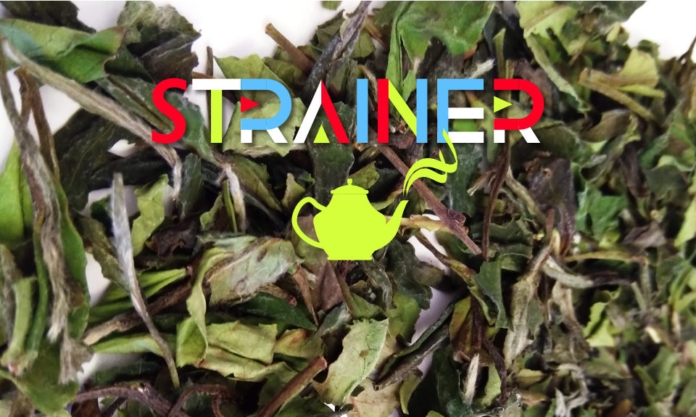Well, I just don’t think it happened like that.
It relies on too many coincidences. It can’t be the true origin of tea-drinking, surely.
For the emperor, Shen Nong (神農), to have received a stray, falling leaf of camellia sinensis in his cup of boiling water relies on that tea plant being very tall, or the weather very windy. It’s the height thing.
And why do these apocryphal breakthroughs always happen to bigwigs like emperors, not to ordinary folk and earnest experimenters? Doesn’t wash with me.
But if the Emperor’s cup was the first example of people drinking tea, then this, surely, is what it tasted like.
I’m digging into another bag of white tea from Fujian. I love these, as I’ve written here in Strainer. And this is different. The white bag is a clue. There’s a white certificate, too.
I am grateful to the friend who gave it to me. His big new box of Nescafé is not a worthy counterpart. Oops.
This white tea is simply much closer to a raw, tea-leaf experience than any processed tea I’ve had. Never mind broken fragments of tea cake; not one of these leaves has been deliberately rolled. If a dried tea leaf, scorched off the bush by unseasonal sunshine perhaps, did fall into your cup, this would be it.
I am reminded of my own hand-picked leaves last Spring. Still on holiday, I had no place to process them, nor refrigerate them. Tragically, I just let them wither in a paper cup. They sweated there, softening each day. But I kept on infusing them in the hotel room, monitoring the changes in taste even as the leaves started to redden and smell interesting.
The white tea I am drinking now was withered, too, but only very briefly, I guess. And then the tissue-paper-thin leaves were baked in the open sun, somehow prevented from blowing away in the breeze. Unlike the brown-coloured, white teas I usually drink, at least half of these leaves are pale green-coloured, much like my hand-picked tea.
And that raw, raw, vegetal taste is there, too, like unripe peas.
Of course this pleases me; much that we enjoy is because of familiarity and recognition. I do like raw tea (and raw peas) though I can’t promise that you do too. Drinking this before breakfast makes me queasy. Caffeine jitters perhaps. But there’s lots of flavour here; picking it up after a stabilising breakfast is rewarding again.
Calling this “raw” unfairly suggests simplicity. Actually, it reminds me of so many other great tea experiences. That green-pea flavour is what Maofeng (毛峰) is all about. Then there are the pale, pale Pouchong (包种) oolongs of Taiwan, one of which I used to sell through my website. And I’m reminded of the Darjeeling my parents kindly brought me from a Himalayan trip 10 years ago. That was truly a memorable adventure, for me!
This drink can conjur all that. A fine, surprising, way to start the year.
So how was tea really discovered? Ah. I’m glad you asked. Actually, it all started with the Sakyamuni Buddha peeling off both of his eyelids…









